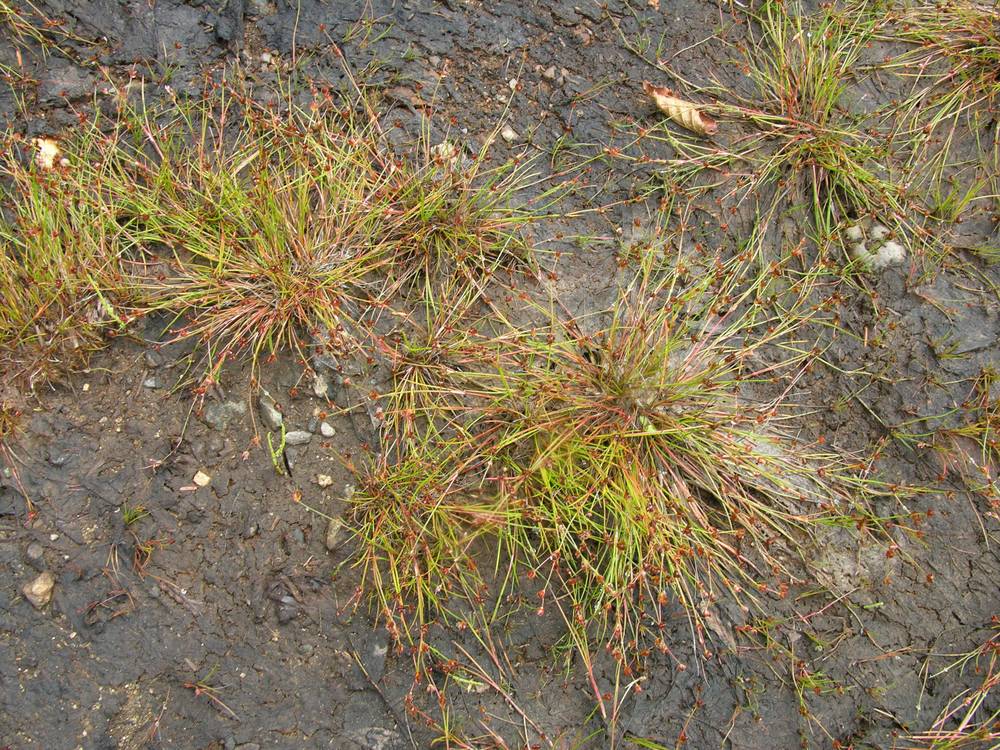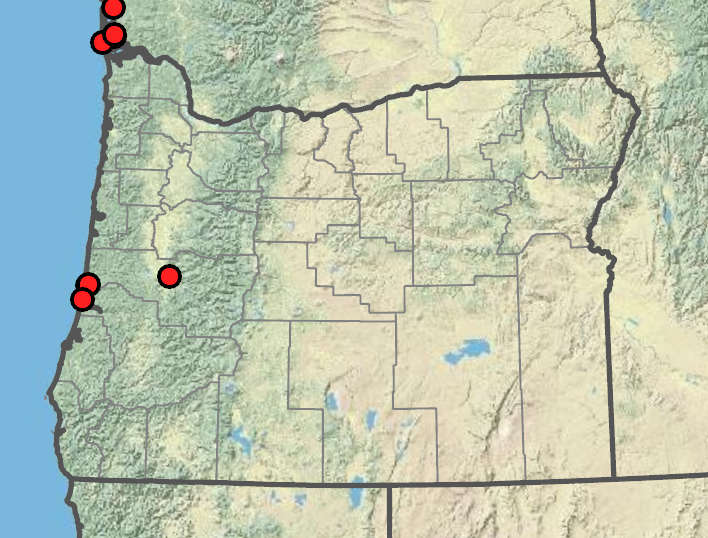Juncus bulbosus
bulbous rush, spreading rush
round; hollow or several-chambered, septate at least in part;
auricles 1–2 mm.
open; (2)6–16 clusters; clusters 2–12-flowered;
flowers often forming leafy bulblets.
tepals 6, 1.8–3.4 mm, green, red, or brown (dark brown);
inner tepal margins flat;
tips usually blunt, hooded;
stamens (3)6;
filaments 0.6–1 mm; longer than or equaling anthers;
anthers 0.2–0.8 mm;
styles 0.2–0.5 mm.
usually 0.1–0.4 mm longer than or equaling tepals, brown to dark brown, abruptly tapered to apices; blunt or acute, 1-chambered.
ellipsoid to ovoid, 0.4–0.6 × 0.2–0.25 mm, apiculate.
=40.
Juncus bulbosus
Damp grassy disturbed ground, lakeshores. 0–50 m. Est. CA, WA; north to British Columbia, northeastern Canada and NY; Australia, Europe, Mauritius, New Zealand. Exotic.
This species is uncommon but can invade natural wetland systems. The capsule is rounded at the tip, differing from the acute to acuminate capsules of J. supiniformis. Juncus supiniformis capsules are more than 1 mm longer than the tepals. Juncus articulatus is coarser and has capsules more exserted than J. bulbosus.
Peter Zika
- Local floras:
BC,
CA,
OR,
WA
- Local Web sites:
CalFlora,
CalPhotos,
Flora NW,
PNW Herbaria
WildflowerSearch
iNaturalist (observations)
USDA Plants Database
- LBJ Wildflower Center
- SEINet
- Plants of the World Online
- Encyclopedia of Life
- Wikipedia
- Google Image Search

